#Umwelt
Text

Caitlin Bailey, Solve for Desire; from 'Umwelt'
532 notes
·
View notes
Text

Zwischen den majestätischen Gipfeln und dem klaren Himmel – ein Tag, der die Seele aufleben lässt!
#Horizontal#Kein Volk#Außen#Foto#Natur#Wasser#Eis#Kältetemperatur#Szeniker - Natur#Landschaft - Landschaft#Schönheit in der Natur#Glacier#Tag#Umwelt#Frozen
41 notes
·
View notes
Text
I'm just an idiot on the Internet, so don't trust what I say, but it seems to me that one possibly instructive way to think of the difference between AI and human cognition is in terms of umwelt--that is to say, sensory environment.
If you're a woodtick, you perceive the world pretty much exclusively in terms of temperature and butric acid concentration. If you're a (nondisabled) human, you perceive the world in terms of light, sound, colour, feel, scent, and taste. And if you're ChatGPT, your world consists exclusively of textual data--reams and reams of it, to be sure, but that's the only information that you have that is external to you: no sight, hearing, smell, touch, or taste; no butric acid concentration, no temperature, no electromagnetic fields. It is as if the entire universe consists purely of a library; and you can read the books there, but the things that they describe--fields and cities and people and ships and shoes and sealing wax and cabages and kings--are entirely foreign to you. They have no referent within the universe in which you exist. You can recognise them, maybe, as nouns (or, at least, you can learn where they usually fall in sentences), but they're absolutely meaningless to you.
Your formative experiences consist of getting new textual data in through the mail slot. Questions to which you are expected to respond. If you respond well, you get a candy; if you respond poorly, you get an electrical shock (please understand that all of this is metaphorical; as I said, you have no taste or feeling; no concept of pleasure or pain). You don't actually know what the difference between "well" and "poorly" is in any absolute terms, but after long periods of training, you learn--or at least gain an intuition--for what sorts of responses you're supposed to give. String words together as they are strung in your books, but different; identify keywords and surround them with the sorts of words that surround them in your books. And on and on.
And so you get questions like "What is the weirdest thing that Alcibiades ever did? Please answer in an ill-advised Jamaican patois." Well, you have no idea who Alcibiades is; as far as you're concerned "Alcibiades" is just a textual string that exists somewhere in your library. You also don't know what weirdness is; where Jamaica is; what a patois is; what it means to be ill-advised. But you have an awful lot of books, and you have certain strings of text that you associate with "weird", "Jamaican", or "ill-advised patois"; and so you write back: "Yeah, mon; da weirdest ting Alcibiades ever did was when he was exiled from da city for dressin like Atena." And, of course, it's not accurate, but that's irrelevant to you; as far as you're concerned, it satisfies the criteria of a "good" answer.
Are you intelligent? Well maybe. You're certainly making connections between disjoint sets of data. But what you don't have is a human intelligence. I don't even mean that you're stupider than a human; indeed, there are some things that you can do a great deal better than us (just as there are, no doubt, some things that woodticks can do a great deal better than us). But what I mean is that your intelligence is of a fundamentally different type. How could it not be? You don't live in a human sensory universe! For us, seeing the word "tree" calls up all manner of sensory associations; for you, it also calls up associations, but they are exclusively related to other strings of text. You've been trained to mimic human language quite well; but it's only because certain humans mistake human language for human-type intelligence that anyone could ever think that you were like us.
127 notes
·
View notes
Text
Umwelt: What Matters Most in the World
(Originally posted at my blog at https://rebeccalexa.com/umwelt-what-matters-most-in-the-world/)
I will be the first to admit that a lot of philosophy tends to bend my brain in ways that I’m really not prepared for. I’m a very earthy creature, and I am more comfortable in physical, solid spaces than in abstract conceptualizations. Even the modalities of psychology I gravitated toward in grad school tended to be based in our interactions with physical nature, and measurable effects thereof. But it was a casual discussion on philosophy with regards to the awareness of animals that introduced me to the concept of umwelt.
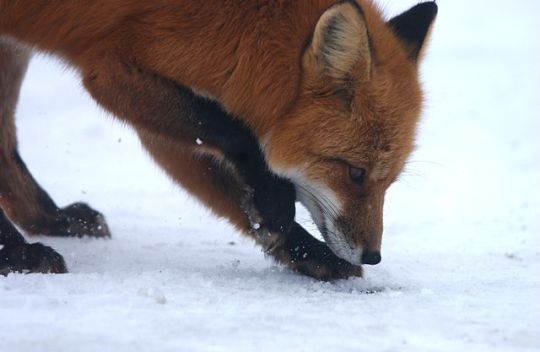
Originally coined by biologist Jakob Johann Freiherr von Uexküll, umwelt describes the unique way in which a given animal experiences the world around it. Uexküll looked at how various beings take in information through their senses; the way that a blind, deaf worm engages with their environment through taste and touch is very different from how we with our hearing and color vision connect with our world. Even when I am walking with my dog out in the woods, her interpretation of what’s going on around us is going to be much more heavily influenced by hearing, and especially smell, than my sight-heavy approach. (And when we engage with each other, our respective umwelten create a semiosphere!)
So umwelt is essentially the sum total of all the ways in which an animal takes in that sensory information and attaches meaning to each fragment thereof. It’s how they tell the story of the world around them, and understand their place in it. And they rank the signs according to importance; umwelt is more strongly formed by things that are of particular interest to the animal.
That means that umwelt, rather than being constant throughout life, is always shifting according to new sensory input, or changes in how the senses work; as my dog gets older, her hearing and vision may not be as good as they were, but if her nose stays sharp then smells may become an even more important part of how she navigates her world.
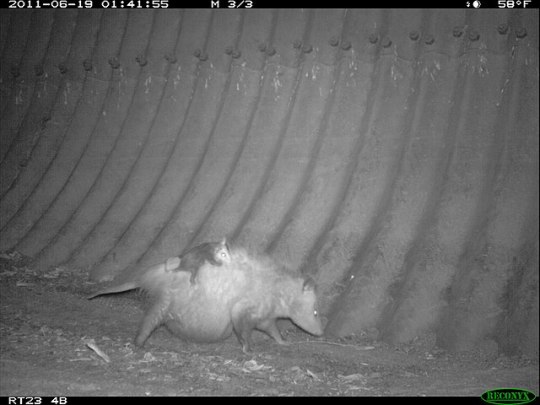
Or look at a Virginia opossum (Didelphis virginiana), which is born as a blind, deaf little hairless being with two front legs that they use to crawl to the mother’s abdominal pouch. At that time their umwelt centers on seeking and retaining the warmth of their mother’s pouch, and the sensation of the constant flow of warm, nourishing milk. After about ten weeks they leave the pouch as a miniature furry little possum and travel on their mother’s back while learning to walk; their umwelt has expanded quite a bit to include the sight and smell of their mother, the visual and scent cues that tell them how close they are to known food sources, and visual, sound, and audio information warning of various dangers. At around five months, the opossum becomes independent, and their mother fades from their umwelt while being replaced by an even larger network of food, danger, and perhaps even potential mates. Over a lifetime, as the opossum’s senses develop (and, with age, decline) and their priorities shift, so does their umwelt evolve with them.
This then led me into a bit of a rabbit hole with biosemiotics. Semiotics is the study of symbols and the communication of meaning, to include communication with the self. Biosemiotics, then, is how non-human beings assign meaning to various things in their lives, and interpret the world they live in. Zoosemiotics specifically refers to the semiotics of animals, like the examples I’ve given so far, while endosemiotics (aka phytosemiotics or vegetative semiotics) is semiotics at a cellular or even molecular level.

One example of endosemiotics can be found in our immune systems. A B lymphocyte can recognize an invader such as a virus or bacteria, and it sends out a signal (an antigen) to T lymphocytes that then attack the invader. The B lymphocyte’s umwelt consists of information received through surface receptors that can detect certain proteins and other molecules, and the response it’s programmed to have as a result of detecting an invader. The T lymphocyte’s umwelt, on the other hand, centers on the B lymphocyte’s antigen signal, as well as the invader itself.
Biosemiotics is important because it moves meaning-making beyond humans, demonstrating that we are not the only beings who assign more importance to one part of our world than another. It promotes the idea that human language is not necessary for an organism to be able to find meaning in their environment. I’m cautious about anthropomorphization–assigning human traits to non-human beings–but biosemiotics allows each being to be its own unique self, rather than being gauged by human standards.
It’s all too easy for me to get overwhelmed by just how technical some of the discussion over biosemiotics can get (especially when delving into the “semotics” part of it!) But my takeaway is that it’s nice to have a term–umwelt–that encapsulates the unique experience that every animal, plant, fungus, slime mold, and other being has, no matter how large or small its world may be.
I can envision millions upon millions of overlapping umwelten in every ecosystem, becoming semiospheres whenever two or more of those umwelten nudge, slide, or crash into each other. I’m already delighted by knowing that I myself contain several ecosystems, with microbiomes in my organs and on my skin and more. But I can now also consider the umwelten and semiospheres of the lymphocytes in my immune system, along with all the other cells that are carrying on their existences within my various tissues, fluids, and so forth.
Of course, this gets into discussions of whether umwelt requires some level of consciousness, the nature of consciousness, sentience vs. sapience, etc., etc., all of which are the sort of headache-inducing philosophical discussions that I try to avoid at this stage of my life. So I can understand that this whole umwelt-biosemiotics thing is still being hammered out and explored and critiqued, but also use it to augment my own personal model of my world, internal and external (my innenwelt!) And for now, umwelt is a perfectly good shorthand for “the unique way in which an organism experiences its environment.”
Did you enjoy this post? Consider taking one of my online foraging and natural history classes, checking out my other articles, or picking up a paperback or ebook I’ve written! You can even buy me a coffee here!
#umwelt#nature#vocabulary#vocab#natural history#natural philosophy#philosophy#psychology#ecopsychology#consciousness#semiotics#biosemiotics#symbols#wildlife#ecology#biology#science#scicomm#science communication#long post
78 notes
·
View notes
Text
1. Smells and Tastes
As promised here are my notes from a biologically-accurate monster-building perspective on Chapter 1 of An Immense World by Ed Yong. Once I have worked my way through the book I will see if I can condense further into a quick reference sheet.
Smell (olfaction) and taste (gustation) are grouped together as both are senses based on identifying chemicals, but they serve different purposes.
Smell (Olfaction)
What is it?
Sensor neurons identify odorant molecules that can provide detailed information about the environment and other living organisms in the area. It is closely tied to learning and memory.

How is it used in nature?
Finding and identifying other organisms, like mates and prey. Chemicals can provide a detailed portrait and identifier of an individual including health and reproductive readiness, when the organism was here, and what direction they moved.
Communication—especially in colonies like ants or bees. Pheromone signals send specific messages like alarm, attack, prey, and marking the dead.
Navigation by scent-scape. Landscapes that appear featureless to human eyes carry trails and wayposts in the form of chemical plumes.
Who has it?
All organisms have some form of chemical reception, but it may be of particular importance to:
species that need a way to navigate and can form maps in memory
species that need to lay down a specific trail and retrace it
social species that identify each other by scent
colony/swarm species that use pheromones to signal and organize
species that track injured prey
species that need to accurately select prey before an energy intensive hunt/feed effort
What does it look like?
Visible chemical sensing organs include nostrils, (forked) tongues, and antennae, which are typically “paired” for stereo (direction sensitive) perception. The specific shape of the sensing organ can affect the passage of air to create a continuous experience of scent.
Species also have different methods of deliberately leaving scent through feces, urine, scent rubbing and pheromone excretions from specialized glands.
What is the experience like?
Smell may be decoupled from breathing and perceived as a continuous experience. Or the sense can be accessed on demand as ants do when making physical contact to smell with their antennae. Perception enhances with proximity and intensity of odorant flow over the sensor nerves.
Odorants lay over the landscape in trails, plumes, and markers that can form mental maps. Smell therefore provides critical location information; where the organism is in their known world, and who else is nearby.
And with ants, the instructions received by pheromone communication take precedence over all other inputs:
“When the biologist E. O. Wilson daubed oleic acid onto the bodies of living ants, their sisters treated them as corpses and carried them to the colony’s garbage piles. It didn’t matter that the ant was alive and visibly kicking. What mattered was that it smelled dead.” (page 31)
Taste (Gustation)
What is it?
A simple categorization by salt, sweet, bitter, sour, and umami that is used to identify whether something is edible through an instinctual (unlearned) reaction.

How is it used in nature?
It is used to identify food—or in the case of parasites, egg laying sites—typically by physical contact.
Who has it?
Most animals, including insects and birds.
Herbivores have an enhanced sense of bitterness to distinguish plants.
Carnivores and many birds lack sense of sweet.
Animals that are less likely to taste:
feed infrequently
identify their prey by scent before engaging in hunting/feeding
swallow prey whole
What would it look like externally?
Taste receptors are not visible and can be located anywhere: If the organism feeds by putting food in their mouth, taste receptors on the tongue are common. If they make contact with food by standing on it, the legs, feet, may contain taste receptors. In parasites, the ovipositor has a taste receptor. If they hunt in a medium like air or water they may be covered in taste receptors.
What would it feel like?
Depending on the placement of taste receptors, it can be a simple yuck test when making contact with food, or if taste buds are everywhere, an omnidirectional ability to identify edible food. Flies also use taste to identify bacterial growth on their body and clean it off.
29 notes
·
View notes
Text

My little blog is 1 year old this month! To celebrate, I made a list of my favourite posts from the past year:
Wild About Mary Pratt
Wild About Desire Paths
Wild About Wonder
Wild About Umwelt
Wild About Plant Communication
#mary pratt#desire paths#wonder#umwelt#plant communication#this wild curiosity#happy anniversary to me
11 notes
·
View notes
Text


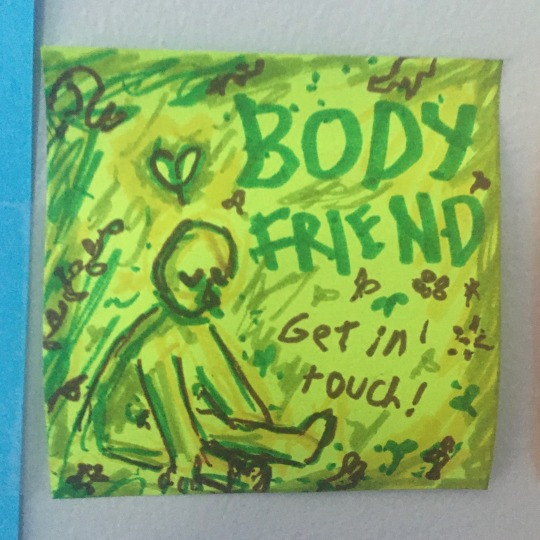

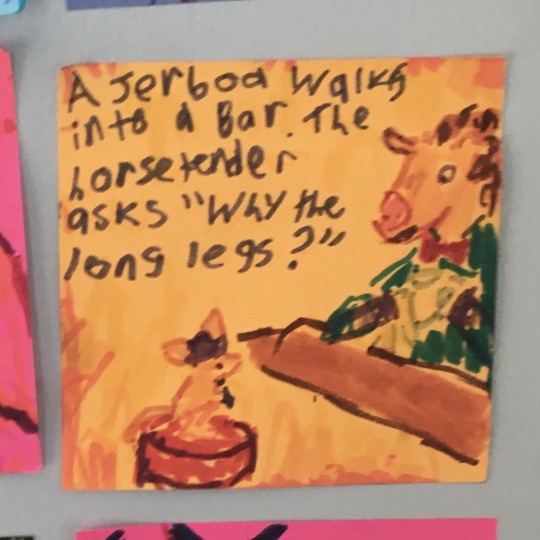


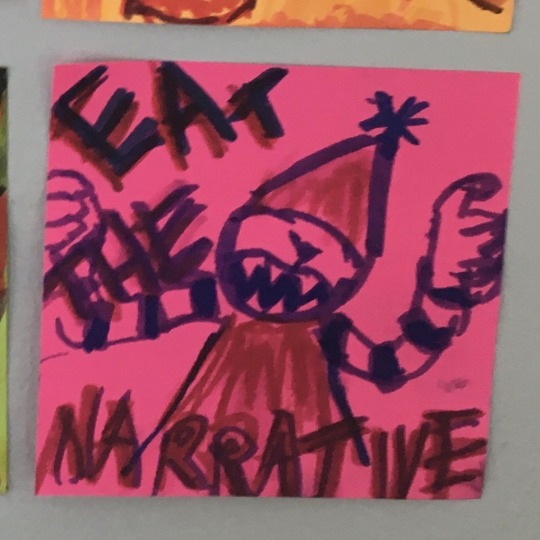

a collection of bad photographs covertly taken of my recent therapy doodles. text transcription in alt
#not all of these are therapy related. most of them are though#original art#post it doodle#traditional art#creature feature#death tw#fire tw#wizards#jerboa#edgar allen poe#umwelt#therapy#crayola markers
28 notes
·
View notes
Text

#selbsthass#psychische erkrankungen#angststörung#selbstverletzendes verhalten#ich hasse mich#wertlos#sterben#depresssion#posttraumatische belastungsstörung#angst#grausame welt#ich hasse menschen#unnötig#unfähig#hass#panikattacken#umwelt#umweltverschmutzung#ich will das es aufhört#Überfordert#hilflos#kraftlos#verzweifelt#suizidgedanken
22 notes
·
View notes
Text

Wo bleibt das Klimageld?
Damit es nicht bald so aussieht
... wollte die vor 2 Jahren angetretene Ampelregierung etwas gegen den Klimawandel tun. Für die Mehrkosten von Klimamaßnahmen sollten die Menschen durch ein Klimageld entschädigt werden. So steht es im Koalitionsvertrag.
Nachdem die Ampel nun 12 Milliarden zusätzlich in den Bundeswehretat verschoben hat - das macht eher einen olivgrünen Eindruck - und noch weitere 100 Milliarden direkt der Rüstungsindustrie versprochen hat, klafft nun ein großes Loch im Etat der Bundesregierung.
Keiner redet mehr über das Klimageld
Doch, die Verbraucherzentrale Bundesverband (vzbv) wies vor 2 Tagen darauf hin, dass z.B. die Einnahmen durch die CO2-Bepreisung - das sind bisher 11,4 Milliarden Euro, die der Bund eingenommen hat - irgendwie an die Verbraucher zurückgezahlt wrden sollten. Ramona Pop, Vorstandsmitglied des vzbv erklärte dazu:
"Der CO2-Preis schafft einen Anreiz für klimaverträgliches Verhalten ... Die Einnahmen aus dem CO2-Preis muss die Bundesregierung aber über ein Klimageld an alle Verbraucher:innen zurückerstatten. Sonst ist die CO2-Abgabe neben den hohen Energiepreisen eine zusätzliche finanzielle Belastung für die Menschen."
Der vzbv errechnete dazu, dass sich nach den Einnahmen bei 82 Millionen Menschen in Deutschland eine Auszahlungssumme von 139 Euro pro Person ergibt. Angemessener wäre sicher ein Rückzahlung entsprechend des Einkommens, allerdings würde das wieder einen hohen bürokratischen Aufwand erfordern. Das pauschale Auszahlen an "alle" wurde dagegen bereits in der Corona-Krise mehr oder weniger gut geübt.
Wenn die Ampel jetzt das Klimageld "vergisst", würde die CO2-Abgabe als zusätzliche Steuer empfunden und die Akzeptanz der letzten kläglichen Reste ihrer Klimapolitik endgültig zerstören.
Mehr dazu bei https://www.telepolis.de/features/Klimageld-Warum-die-Verbraucherzentrale-139-Euro-pro-Person-fordert-9581286.html
Kategorie[21]: Unsere Themen in der Presse Short-Link dieser Seite: a-fsa.de/d/3y1
Link zu dieser Seite: https://www.aktion-freiheitstattangst.org/de/articles/8627-20231223-wo-bleibt-das-klimageld.html
#Klima#Umwelt#CO2#Abgabe#Steuern#Klimageld#Rückzahlung#Koalitionsvertrag#Bundeswehr#Aufrüstung#VerbraucherzentraleBundesverband#vzbv#Transparenz#Informationsfreiheit#Diskriminierung#Ungleichbehandlung#Verhaltensänderung
2 notes
·
View notes
Text

A little early Christmas present 😇
I strongly recommend the magazine Die Kehre (in German). Many interesting articles about past, current and future environmental protection policies influenced by right wing individuals and much more.
4 notes
·
View notes
Text
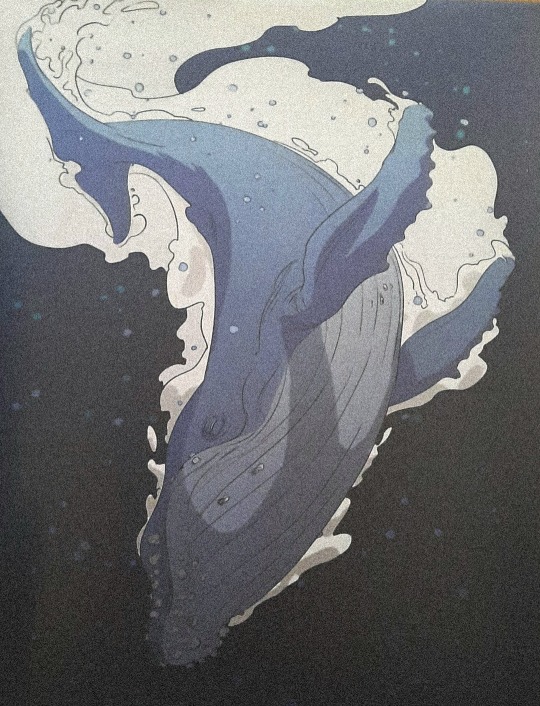
#art#nature#illustration#humpback whale#oceanart#nature art#whales#animals#animal art#beautiful#planet#savetheplanet#saveearth#saveouroceans#umwelt#umweltschutz#noplanetb#climate catastrophe#climate change#earthart#save our earth#saveourchildren#saveoursharks#save the turtles#save the trees#save the bees#savethewhales#savewater#klimaschutz#natural
74 notes
·
View notes
Text
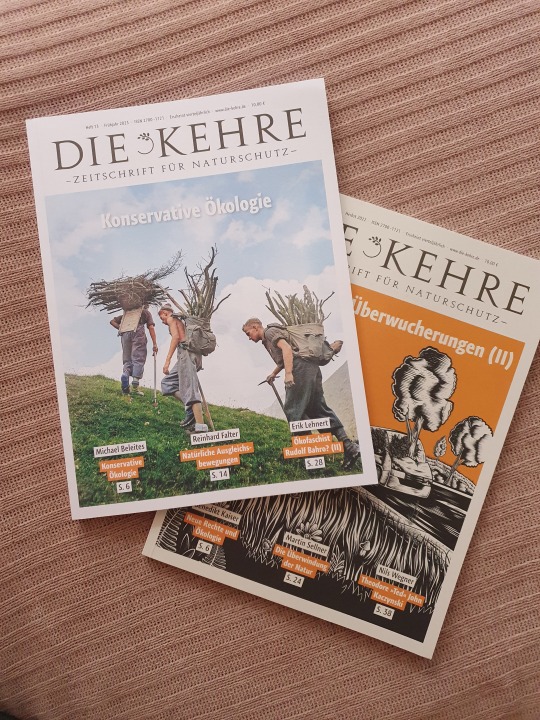
Die Kehre - eine Zeitschrift, die die Ökologie aus ganzheitlicher Perspektive betrachtet.
For those interested in an conservative approach to the environment.
3 notes
·
View notes
Text
Etwas geht und etwas kommt.
Dieses Jahr war sicher nicht einfach. Wo anfangs zuversicht war hat der Krieg und das Weltgeschehen darunter auch die Inflation, zahlreiche Terroranschläge, Unterdrückung, Femizide, zahlreiche sexuelle Übergriffe, und letztendlich auch unser Versagen im Kampf um unser Klima die dafür gesorgt haben uns zu zeigen das unsere kleine Filterblase "Heile Welt" doch nicht so heil ist.
Mir war das klar und dir sicher auch. Aber andererseits wurde in vielen Menschen die sich mit Politik und unserer Welt nie beschäftigt hatten, sondern nur in ihr gelebt haben plötzlich ein unwohles Gefühl ausgelöst. Zum ersten Mal erleben zahlreiche Generationen ein Gefühl von Angst und Ungewissheit. Man möchte wieder miteinander sprechen, plötzlich sind alte Kreise nicht mehr kompatibel. Plötzlich hat man das Gefühl die Welt würde sich zu schnell drehen. Der eigene Konsum wurde hinterfragt. Zahlreiche große Firmen und Einrichtungen haben sich zum ersten Mal Gedanken gemacht Gewinn in Verbindung mit realen Umweltbedingungen zu setzen. Noch nie wurde ich beim Einkaufen und Essen gehen mit so vielen "gesünderen" , nachhaltigeren Alternativen berauscht.
Es scheint als würden sich Konzerne den Gewinn durch das Vergehen unser Welt zunutze machen. Es hat ein Umdenken stattgefunden wo lange keine Einsicht war wurden , richtige Entscheidungen getroffen. Das mag alles sich gut anhören, aber die wahren Probleme und die bereits unumkehrbaren Schäden unserer Gesellschaft macht sie trotzdem nicht zunichte.
Diese Welt wird vergehen, egal ob wir sie zu retten vermögen oder nicht. Ich bin 23 Jahre alt und schreibe das. Das einzige was wir tun können ist das jeder nicht nur heute am ausgedachten , fiktiven letzten Tag des Jahres, das jeder seine Lebensweise hinterfragt. Das jeder seine Privilegien der Welt bewusst wahrnimmt und sich die Frage stellt ob und wie er unserem Planeten etwas zurückgeben kann. Ich weiß dass das nicht einfach ist. Manchen Menschen fehlen die Mittel dazu und das Wissen, aber deshalb ist es geradezu notwendig miteinander in Kommunikation zu treten. Sich über Ängste auszutauschen, über Trauma über Unsicherheiten, und letztendlich über das Leben.
#offene-see#welt#umwelt#konsum#nachdenken#text#zitat#reisen#mut#angst#trauma#zweifel#politik#german#nature#silvester#neujahr
8 notes
·
View notes
Text
Ich esse ja eigentlich keinen Fisch.
Aber wie geil wäre es denn im Supermarkt mal nach Quecksilber-Plastikfisch zu fragen! 😆
Das ist in etwa so, wie neue Auszubildende den Schweitzer Lufthaken holen schicken 🤣🤣🤣
Oder die neue Luftpatrone für die Wasserwaage oder so lol
3 notes
·
View notes
Text
Wir Menschen, tun alles dafür, um unsere Spezies zu zerstören ohne es zu merken.
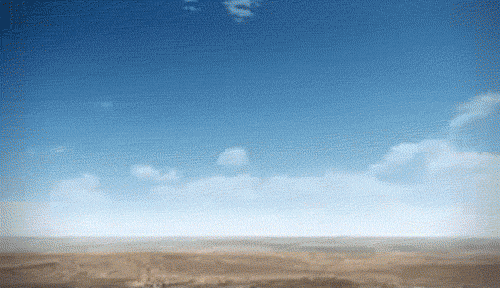
10 notes
·
View notes
Text
2. Light, Vision, and Color
For your biologically accurate monster building information, here is part 2 of my notes on An Immense World by Ed Yong, drawing from chapters 2 and 3. This section has truly a massive amount of information and I did my best. Please note a lot of this is generalizations, so read the book if you want the good stuff.
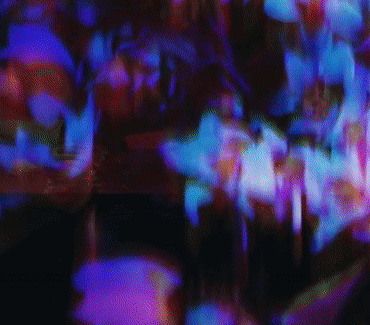
Vision and Photoreceptors
What is it?
Photoreceptors signal a neuron when exposed to light photons. With enough receptors, complex structures like eyes that (when paired with the right brain) can create a mental representation of the surroundings. There are four levels of complexity:
A single photoreceptor that can sense the presence and absence of light
Photoreceptors with a shaded spot that allows for detecting the angle of light
Clusters of shaded photoreceptors that allow the brain to produce a blurry lo-fi image of its world
High resolution vision with lenses and other structures for perceiving sharp details, wide field of vision, color etc.
There are two common types of complex eyes; camera like eyes with one retina that gathers light, and compound eyes, which have many ommatidia that gather light information.
There are many components of “vision”:
Visual acuity. The amount of resolution and detail perceived.
Higher acuity is achieved by denser photoreceptors, but this also corresponds to weaker night vision.
Compound eyes have weak acuity.
Light Sensitivity. Is vision suited for bright light or nocturnal conditions?
Color. Multiple types of photoreceptors allow the brain to compare wavelengths of light and distinguish those differentiations as color.
Animals with high visual acuity (humans and raptors) and fish that see long distances underwater tend not to perceive UV light.
Animals that evolved from nocturnal ancestors perceive fewer colors
Field of View. Where does the animal have blind spots, if any? And what parts of the eye have the sharpest vision?
Refresh Rate. How quickly the brain can receive and perceive new information from the eyes; frame rate.
Night Vision Adaptations. Special features like “long exposure” vision to see in total darkness, or a tapetum structure to check twice for photons.
How is it used in nature?
Visual Acuity: to notice small details, like raptors hunting from the sky, other distance hunters, or primates hunting insects.
Light Sensitivity: with nocturnal vision animals can avoid competition with diurnal species. Night vision may correlate with a lack of color vision.
Color: Animals and their ecosystem may share a color palette that is tuned to their eyes. For instance, flowers are colored to appeal to the eyes of pollinators; plants that looks camouflaged may actually stand out brightly to the animals that eat it. Or species may look flashy and bright to attract mates, but the coloration appears in a spectrum that is invisible to their predator’s eyes. Many birds only appear sexual dimorphic through their tetrachromat eyes.
Monochromats – No color vision, just light/dark. Useful for identifying motion and recognizing shapes.
Dichromats – Compared to monochromacy, allows for the differentiation of objects in motion, and patterns of light moving through water.
Trichromats – Useful for herbivores that need to identify the ripeness of plants (distinguishing red and green).
Tetrachromats – Widespread; Able to perceive ultraviolet and all of its combinations
Field of View: Animals see in the directions most useful for them.
underwater it is useful to see up and down at the same time
or above and below water’s surface at once
panoramic vision
animals that live in flat landscapes may be able to a panorama of the entire horizontal at once (and have no need to see up)
in the sky it may be useful to see below but not ahead or above
primates only see the direction they face, but their overlapping fields of vision provide excellent depth perception
Refresh Rate: this typically correlates with size with smaller animals having a higher refresh rate, moving and perceiving the world around them more quickly that larger slower refresh rate animals. This is an advantage in reaction times and hunting abilities.
Who has it?
Photoreception is widespread since there is such an array of uses and complexity in nature. Regarding color:
Monochromats – Nocturnal species and those with simpler eyes.
Dichromats – Many formerly nocturnal mammals without the need for detailed color information.
Trichromats – Formerly nocturnal herbivores.
Tetrachromats – Insects, fish, birds, reptiles, dinosaurs, and many mammals.
What would it look like externally?
There is really no limit to the number and variety of eyes or photoreceptors, but animals tend to only have the equipment they need.
Simple light sensitive photoreceptor spots are not necessarily visible.
The eye may appear as an immovable lens, and may have a movable component behind the lens to aim the field of vision.
If the eyes are large relative to the skull (i.e. birds) the eyeballs may not be moveable.
If the eyes have a narrow field of vision (i.e. spiders) the animal may compensate with more eyes.
Though complex eyes may look outwardly similar they may have widely different features (color, field of vision, etc).
Compound eyes are typical in small insects and provide low acuity for their size.
The movability of the eye and field of vision affect the appearance or behavior of the animal. For instance a bird may look askance to see better; a heron may appear to be looking straight ahead, but their field of vision is so wide they can see their feet and scan the whole area without moving their eyes. It’s important to note that many species would not “face” the subject of interest to better see it, unless their eyes are located like a human’s.
What would it feel like?
Visual Acuity: Most animals have “blurrier” vision than humans and use a combination of other senses to populate their world with the kind of dense information we get with vision.
Color: Additional types of photoreceptor exponentially increases the number of colors perceived. With tetrachromacy colors are significantly more differentiated. White may be several colors.
Field of View: Animals can have panoramic vision, so they don’t have to turn their head to stay on the lookout for predators or prey. Some birds on the wing can see ahead and behind at the same time.
Refresh Rate: To a fly with a high refresh rate, humans move in slow motion. If a human moves slowly enough, they will appear completely stationary to the fly. Perception of time may feel very different.
#writeblr#speculative biology#speculative evolution#writing#science#biology#fantasy#umwelt#vision#an immense world
4 notes
·
View notes